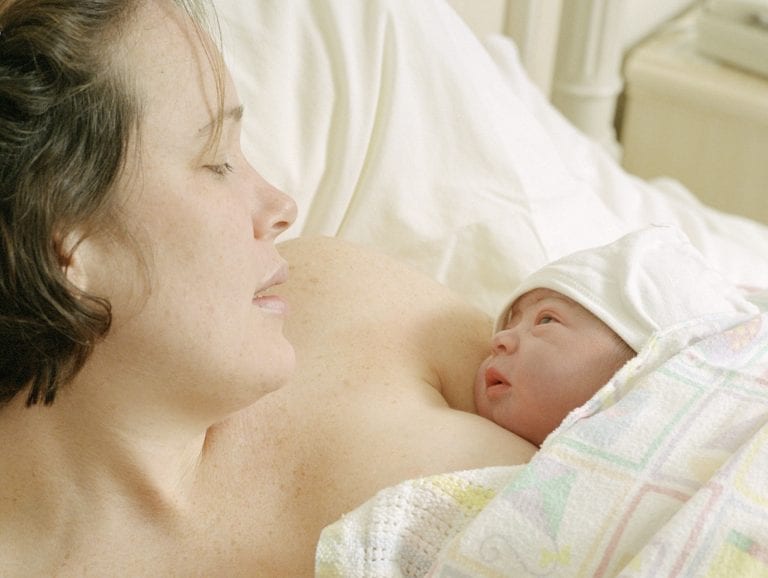The Importance Of Skin To Skin
You may have already included the request in your birth plan to have your baby placed on your chest immediately after birth, but did you know that this is the best place for your baby to remain for the first couple of hours of life? And for you and baby to reconnect through nursing and everyday care? Here is the importance of skin to skin.
Your baby is going through so many changes at birth. She’s adapting from a warm, water-filled environment where the placenta did the breathing and feeding for her to a cooler, air-filled environment where she now has to breathe on her own, regulate her own temperature and maintain a stable blood sugar level.
Go skin-to-skin
You can help her make this transition simply through skin-to-skin contact with her from birth onward. You may find that your baby fits best lying across your breasts or in between them. Once she’s snuggled in to your bare chest wearing only her diaper, cover her back with a warm towel or blanket and leave her there, regularly checking her breathing and her overall wellbeing. This is nature’s ideal way of connecting you and your baby from birth.
Research shows skin-to-skin contact in this position will help your baby maintain her body temperature, breathe easier and hold a more stable blood sugar. Did you know that your body responds to your baby’s presence hormonally and warms your chest and breasts, or cools them down, in response to what your baby needs?
This hormonal and blood flow to your chest also supports nursing by helping your milk come in. It also releases those hormones that make you feel happy and loving toward your baby.
Most babies are very awake and alert right after birth and will want to nurse within minutes of being born. Having your baby on your chest helps this happen. Through your skin, your baby can also hear your heartbeat, a comforting and familiar sound to her! Babies snuggled skin-to-skin tend to cry less, even through painful experiences like when a healthcare provider obtains a blood sample.
Stand up for snuggling
Be warned: healthcare professionals and family members alike can inadvertently interfere with this important skin-to-skin time. Stand up for your baby’s right to have the best start with you. Ask your healthcare providers to perform any essential assessments with baby on your chest, and delay those that can wait an hour or so. Know that if you have HIV or hepatitis, then your baby must be bathed to remove any blood before being placed on your chest.
Family members can wait too: Ask them to watch you as a pair and wait to hold baby until later – she’s recovering from birth. Include these desires in your birth plan and talk to your caregivers – both experts and family members – ahead of time. Designate your partner or someone else to provide this care should you have a medical problem that prevents you from holding your baby right after birth.
After the first hour or two, share the love, letting your partner practice skin-to-skin care as well, and take this good habit home with you.
Keep your baby close to your chest
- Your body responds hormonally to what your baby needs by warming or cooling your chest and breasts.
- Skin-to-skin contact releases hormones that make you feel happy and loving toward your baby.
- Most babies are alert right after birth and will want to nurse. Having your baby on your chest helps this happen.
- Through your skin, your baby can hear your heartbeat, a comforting and familiar sound to her!
FURTHER READING:
Making Your Home Comfortable for Baby
Steps After Bringing Baby Home
Here’s Why Skin to Skin is So Essential








Comments are closed.